Brief history of autopilot
Autopilot is a device or a software and hardware complex that can drive the vehicle entrusted to it along a predetermined trajectory. The history of the autopilot began with the maintenance of a certain flight course, but over time, the development of technology has made it possible to make planes that can land and take off themselves, trains that travel without an engineer, and robot cars, which may soon become commonplace on public roads.
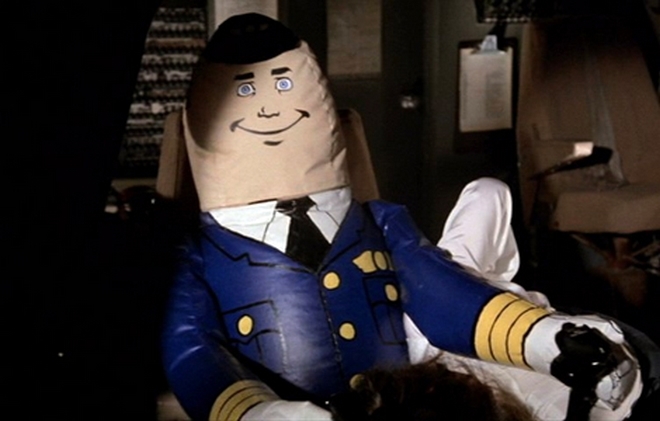
Shot from the movie "Airplane"
The first development in the field of aircraft control automation was made in the USA in 1912 by Sperry Corporation. The autopilot helped to automatically maintain the flight course and stabilize the roll. A hydraulic drive with a unit that receives signals from a gyro and an altimeter, was connected with elevators and controls. The device was called the “gyroscopic stabilizing device”, it was first installed on a Curtiss C-2 aircraft and shown at an exhibition in France on June 18, 1914.
As part of the demonstration during the flight, both pilots climbed onto the wings of the aircraft to show the ability of the aircraft and continue flying without manual control.
')

In the USSR, great interest was expressed in the topic of autopilots, as indicated by the publication “Fundamentals of the theory of automatic piloting and autopilot. Digest of articles". The book includes translated articles “General theory of automatic regulation”, “Siemens autopilot for aircraft”, “Sperry's Gyropilot” and others, describes the principles of automatic piloting and the design of autopilot. You can read the book on one well-known resource, which is already the second month they are trying to block in Russia.
The use of autopilot is necessary not only to reduce the load on a living person during control, but also to control torpedoes and missiles when there is no pilot and there is no pilot (there is an exception - a type of Japanese torpedoes called kaiten , which were operated by suicide bombers) .

In 1947, the American military transport aircraft Douglas C-54 Skymaster, built on the basis of the passenger DC-4, flew over the Atlantic under the control of the autopilot. Both takeoff and landing were carried out automatically.
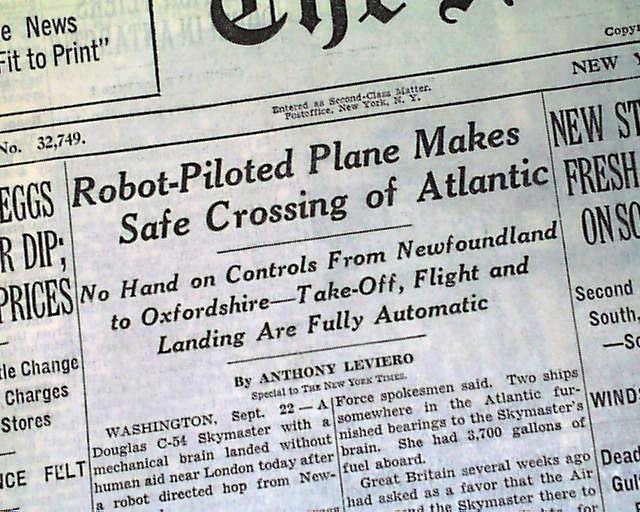
Douglas C-54
The sense of autopilot is that the system supports the correct orientation of the device. In the case of an airplane, orientation in space is determined by three angles. This is the pitch angle — the angle between the longitudinal axis of the aircraft and the horizontal plane, the yaw angle — the angle of rotation of the hull in the horizontal plane, and the roll angle — it occurs when the aircraft turns around the longitudinal axis.
To preserve the orientation, it is necessary to determine it, and the gyroscope helped with this. American pilot Elmer Sperry used it to first simply stabilize the aircraft, and then create an autopilot in the early 1920s. If the first autopilot could maintain the specified flight mode, then the subsequent systems controlled the rudders and engines of the aircraft and could not only fly without the participation of the pilot, but also take off and land.

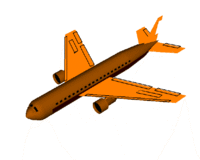

Pitch, Yaw and Roll
An excellent example of an early autopilot is the German V-2 long-range ballistic missile, which the Wehrmacht adopted at the end of World War II. The rocket took off vertically, after which the autonomous gyroscopic control system came into action.

But the excessive passion for autopilot led to the fact that civil aviation pilots in the United States began to make mistakes in manual control. They rely too much on automation , and as a result of research, they show unsatisfactory flight test results. This leads to human sacrifice. A similar problem with automation is in the officers of the warships of the US Navy, they use GPS, but few cadets know how to handle a sextant.
And, of course, there is a huge number of multicopter and drones of other types that are capable of working both under the control of a pilot operator, as well as independently and when interacting with other devices .
In 1967 in the capital of Great Britain opened the line London Victoria. This was the first line on which trains operated using the Automatic Train Operation system. After this, the ATO technology is developed so that trains can travel absolutely without the participation of live drivers in the cabin or employees on board.

Queen Elizabeth in a train on the line London Victoria, 1969
Four levels of "development" of automated systems for rail transport are divided. One of the simplest systems is ATO in the London subway, and the most difficult is in the Copenhagen metro , where trains move constantly without drivers, open and close the doors themselves, react promptly in case of emergency to, for example, people on rails. The driver's cab is not at all, and passengers are watching the movement through the windshield. The control center employs only five operators per shift who can interfere with work in an emergency, but for the most part control the operation of the systems. The automatics made it possible to switch to round-the-clock work, and the metro closes for one night six times a year to overhaul.

In 2016, three automatic trains will be launched on the Koltsevaya metro line in Moscow. The system will send the trains from the station after the doors are closed by the machinists and lead the train on the stretch in accordance with the schedule. It is important to ensure the safety not only of passengers, but also of people who illegally penetrate the tunnels of the Moscow metro - about eight hundred such cases occur in a year, although thanks to the introduction of an intelligent protection system that traces outsiders, the number of such cases decreases. In any case, the cabin will need a live engineer.
The trend of several years in a row are unmanned vehicles. It all started much earlier, with the creation of the first cruise control, which is also called the “auto-speed” and “auto-drive”. All that he does - it maintains a constant speed of the car, adding gas at lower speeds and decreasing with increasing, self-brakes on the slopes. Such systems began to be put on cars in large numbers in the 1970s in the USA due to the presence of long motorways in the country.
Invented them earlier - in the 1940-1950s in the same states, the company American Motors. Their speed control unit was designed for large cars with an automatic transmission. In Russia, for the first time, a similar system was equipped with a GAZ-21 in 1956. “Manual gas” worked like this: while driving, it was necessary to extend the handle, after which you can take your foot off the gas pedal.

Adaptive cruise control maintains a variable speed, adjusting to the average speed in the stream and constantly keeping the distance between the car and the vehicle in front. For the first time, these systems began to be installed in the late 1990s by Mercedes-Benz, BMW and Toyota . For an adaptive system, you must have a working ABS and ESP, otherwise the system will not work.
Many companies now continue to improve existing technologies with the goal of making fully autonomous cars . In 2011, Google lobbied for the law of the state of Nevada so that unmanned vehicles could be used on public roads. In May 2012, the company obtained a license for drones in Nevada, and in September of the same year, the California authorities legalized cars with autopilot function. Such cars, in theory, can save hundreds of billions of dollars a year , but not everyone sees the future in unmanned vehicles - for example, the head of the Lyft taxi service decides on such a future .
In December 2014, Google introduced the first finished version of the car . Prior to this, the company showed a layout with broken headlights. Google is confident that robobomili appear on the roads in two to five years .

In addition to Google, a number of major automakers are working on unmanned vehicles. For example, the administration of the Swedish Gothenburg ordered from Volvo Cars a hundred unmanned vehicles by 2017 in the amount of 56.3 million euros. Unmanned taxis in the country plan to launch the Japanese authorities. Nissan wants to start selling unmanned cars by 2020. Audi and Toyota already have prototypes, Tesla has already implemented the autopilot function in the Model S , and Ford started teaching its cars to ride in the snow without driver participation.
To check the orientation of the car in space, compliance with signs and determine the road users autonomous car uses a lot of incoming information. This is data from the installed lidar - Ford has just four of them, information from cameras and various sensors. Computer for autonomous cars developed Nvidia .
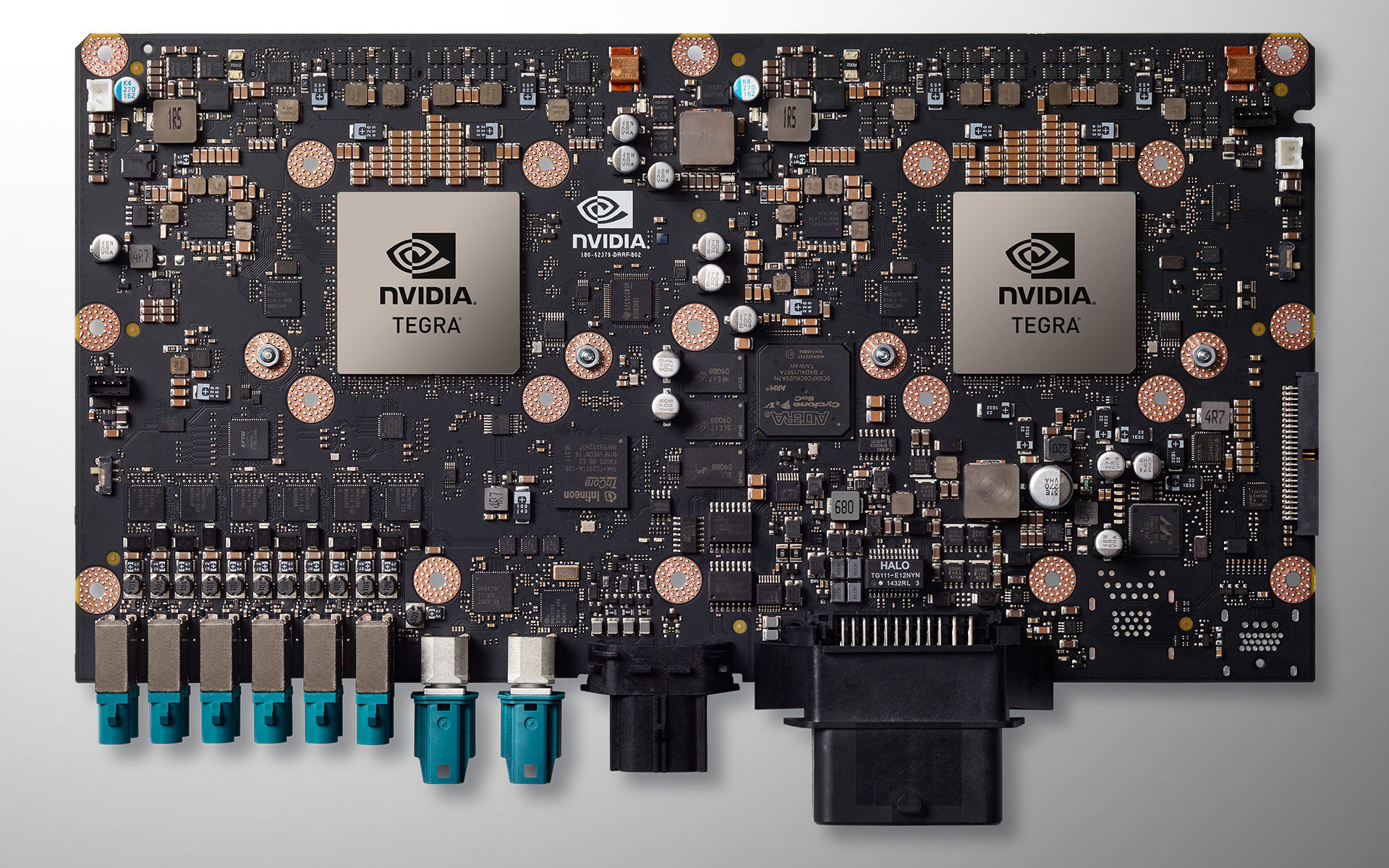
BMW, Honda, Volkswagen, Tesla and GM are working in conjunction with Mobileye - this version of the autopilot uses the mobile Internet and sensors that are already installed on many cars. Mobileye develops security systems to prevent collisions. It remains only to teach unmanned vehicles to solve ethical issues - for example, how to behave when an accident with human casualties is inevitable, and who needs to be sacrificed.
A KAMAZ is working on an unmanned truck capable of driving on Russian roads and overcoming, previously recognizing, unexpected breaks and holes in the asphalt. While many automakers work with passenger cars, only few are engaged in trucks.
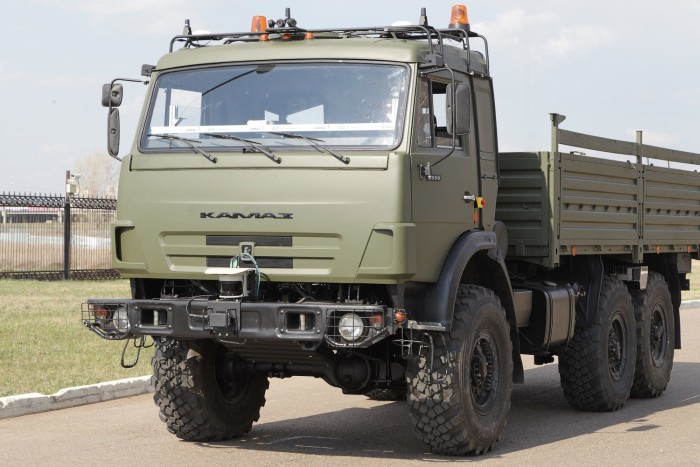
This is how the “Summon” function in the Tesla Model S is interesting. It is interesting how comfortable it is with the development of technology in the future in the Ikea loading area to “encourage” the car to load purchases into it.

Shot from the movie "Airplane"
Aircrafts
The first development in the field of aircraft control automation was made in the USA in 1912 by Sperry Corporation. The autopilot helped to automatically maintain the flight course and stabilize the roll. A hydraulic drive with a unit that receives signals from a gyro and an altimeter, was connected with elevators and controls. The device was called the “gyroscopic stabilizing device”, it was first installed on a Curtiss C-2 aircraft and shown at an exhibition in France on June 18, 1914.
As part of the demonstration during the flight, both pilots climbed onto the wings of the aircraft to show the ability of the aircraft and continue flying without manual control.
')

In the USSR, great interest was expressed in the topic of autopilots, as indicated by the publication “Fundamentals of the theory of automatic piloting and autopilot. Digest of articles". The book includes translated articles “General theory of automatic regulation”, “Siemens autopilot for aircraft”, “Sperry's Gyropilot” and others, describes the principles of automatic piloting and the design of autopilot. You can read the book on one well-known resource, which is already the second month they are trying to block in Russia.
The use of autopilot is necessary not only to reduce the load on a living person during control, but also to control torpedoes and missiles when there is no pilot and there is no pilot (there is an exception - a type of Japanese torpedoes called kaiten , which were operated by suicide bombers) .

In 1947, the American military transport aircraft Douglas C-54 Skymaster, built on the basis of the passenger DC-4, flew over the Atlantic under the control of the autopilot. Both takeoff and landing were carried out automatically.

Douglas C-54
The sense of autopilot is that the system supports the correct orientation of the device. In the case of an airplane, orientation in space is determined by three angles. This is the pitch angle — the angle between the longitudinal axis of the aircraft and the horizontal plane, the yaw angle — the angle of rotation of the hull in the horizontal plane, and the roll angle — it occurs when the aircraft turns around the longitudinal axis.
To preserve the orientation, it is necessary to determine it, and the gyroscope helped with this. American pilot Elmer Sperry used it to first simply stabilize the aircraft, and then create an autopilot in the early 1920s. If the first autopilot could maintain the specified flight mode, then the subsequent systems controlled the rudders and engines of the aircraft and could not only fly without the participation of the pilot, but also take off and land.



Pitch, Yaw and Roll
An excellent example of an early autopilot is the German V-2 long-range ballistic missile, which the Wehrmacht adopted at the end of World War II. The rocket took off vertically, after which the autonomous gyroscopic control system came into action.

But the excessive passion for autopilot led to the fact that civil aviation pilots in the United States began to make mistakes in manual control. They rely too much on automation , and as a result of research, they show unsatisfactory flight test results. This leads to human sacrifice. A similar problem with automation is in the officers of the warships of the US Navy, they use GPS, but few cadets know how to handle a sextant.
And, of course, there is a huge number of multicopter and drones of other types that are capable of working both under the control of a pilot operator, as well as independently and when interacting with other devices .
Rail transport
In 1967 in the capital of Great Britain opened the line London Victoria. This was the first line on which trains operated using the Automatic Train Operation system. After this, the ATO technology is developed so that trains can travel absolutely without the participation of live drivers in the cabin or employees on board.

Queen Elizabeth in a train on the line London Victoria, 1969
Four levels of "development" of automated systems for rail transport are divided. One of the simplest systems is ATO in the London subway, and the most difficult is in the Copenhagen metro , where trains move constantly without drivers, open and close the doors themselves, react promptly in case of emergency to, for example, people on rails. The driver's cab is not at all, and passengers are watching the movement through the windshield. The control center employs only five operators per shift who can interfere with work in an emergency, but for the most part control the operation of the systems. The automatics made it possible to switch to round-the-clock work, and the metro closes for one night six times a year to overhaul.

In 2016, three automatic trains will be launched on the Koltsevaya metro line in Moscow. The system will send the trains from the station after the doors are closed by the machinists and lead the train on the stretch in accordance with the schedule. It is important to ensure the safety not only of passengers, but also of people who illegally penetrate the tunnels of the Moscow metro - about eight hundred such cases occur in a year, although thanks to the introduction of an intelligent protection system that traces outsiders, the number of such cases decreases. In any case, the cabin will need a live engineer.
Cars
The trend of several years in a row are unmanned vehicles. It all started much earlier, with the creation of the first cruise control, which is also called the “auto-speed” and “auto-drive”. All that he does - it maintains a constant speed of the car, adding gas at lower speeds and decreasing with increasing, self-brakes on the slopes. Such systems began to be put on cars in large numbers in the 1970s in the USA due to the presence of long motorways in the country.
Invented them earlier - in the 1940-1950s in the same states, the company American Motors. Their speed control unit was designed for large cars with an automatic transmission. In Russia, for the first time, a similar system was equipped with a GAZ-21 in 1956. “Manual gas” worked like this: while driving, it was necessary to extend the handle, after which you can take your foot off the gas pedal.

Adaptive cruise control maintains a variable speed, adjusting to the average speed in the stream and constantly keeping the distance between the car and the vehicle in front. For the first time, these systems began to be installed in the late 1990s by Mercedes-Benz, BMW and Toyota . For an adaptive system, you must have a working ABS and ESP, otherwise the system will not work.
Many companies now continue to improve existing technologies with the goal of making fully autonomous cars . In 2011, Google lobbied for the law of the state of Nevada so that unmanned vehicles could be used on public roads. In May 2012, the company obtained a license for drones in Nevada, and in September of the same year, the California authorities legalized cars with autopilot function. Such cars, in theory, can save hundreds of billions of dollars a year , but not everyone sees the future in unmanned vehicles - for example, the head of the Lyft taxi service decides on such a future .
In December 2014, Google introduced the first finished version of the car . Prior to this, the company showed a layout with broken headlights. Google is confident that robobomili appear on the roads in two to five years .

In addition to Google, a number of major automakers are working on unmanned vehicles. For example, the administration of the Swedish Gothenburg ordered from Volvo Cars a hundred unmanned vehicles by 2017 in the amount of 56.3 million euros. Unmanned taxis in the country plan to launch the Japanese authorities. Nissan wants to start selling unmanned cars by 2020. Audi and Toyota already have prototypes, Tesla has already implemented the autopilot function in the Model S , and Ford started teaching its cars to ride in the snow without driver participation.
To check the orientation of the car in space, compliance with signs and determine the road users autonomous car uses a lot of incoming information. This is data from the installed lidar - Ford has just four of them, information from cameras and various sensors. Computer for autonomous cars developed Nvidia .

BMW, Honda, Volkswagen, Tesla and GM are working in conjunction with Mobileye - this version of the autopilot uses the mobile Internet and sensors that are already installed on many cars. Mobileye develops security systems to prevent collisions. It remains only to teach unmanned vehicles to solve ethical issues - for example, how to behave when an accident with human casualties is inevitable, and who needs to be sacrificed.
A KAMAZ is working on an unmanned truck capable of driving on Russian roads and overcoming, previously recognizing, unexpected breaks and holes in the asphalt. While many automakers work with passenger cars, only few are engaged in trucks.

This is how the “Summon” function in the Tesla Model S is interesting. It is interesting how comfortable it is with the development of technology in the future in the Ikea loading area to “encourage” the car to load purchases into it.
Source: https://habr.com/ru/post/371603/
All Articles